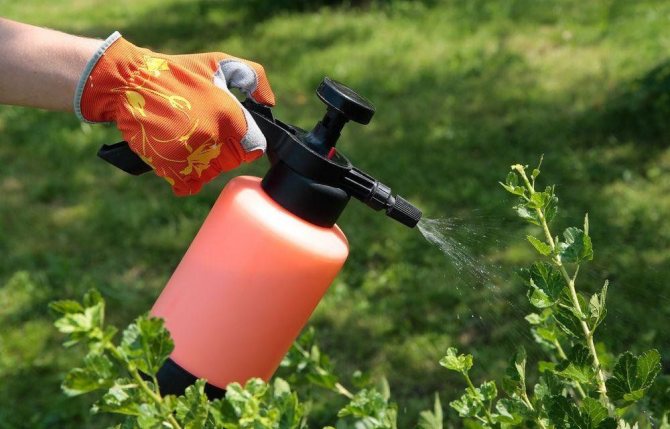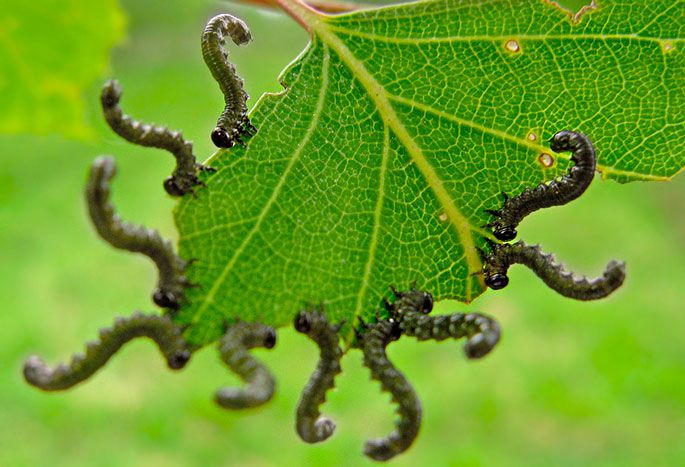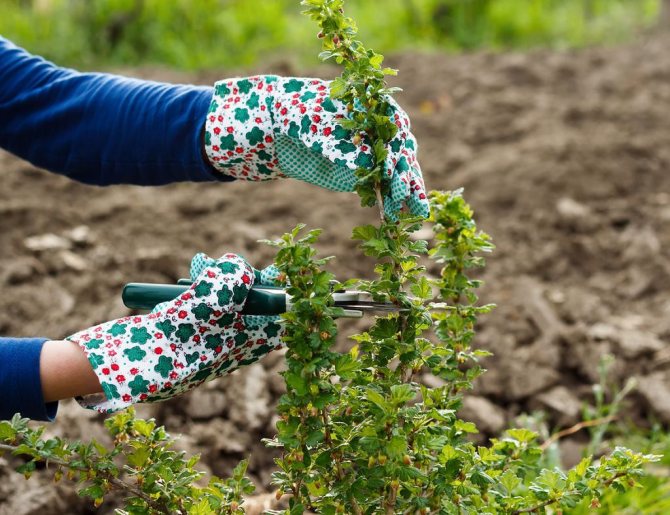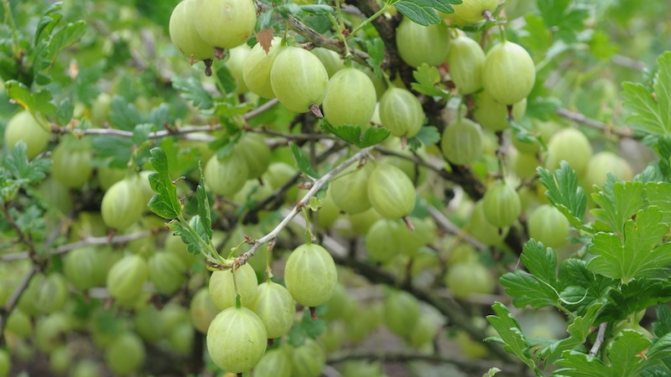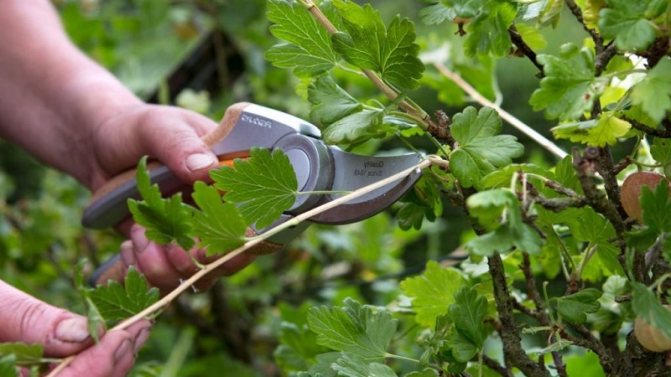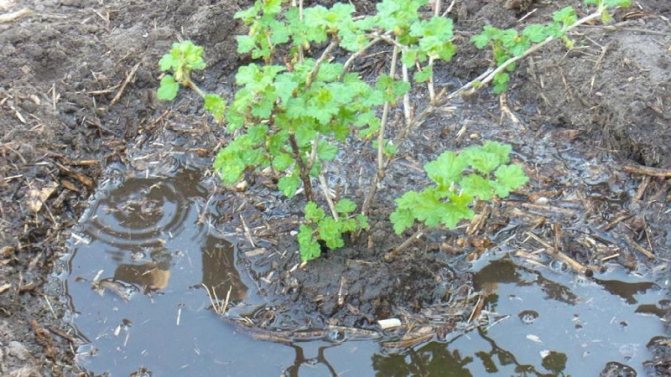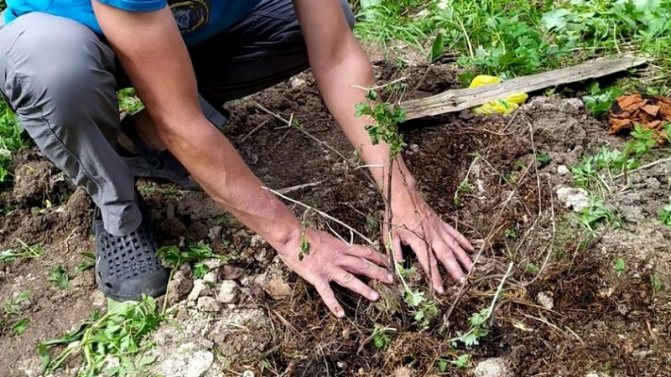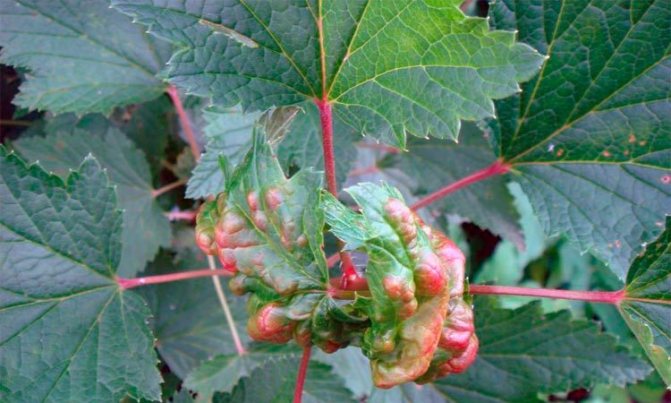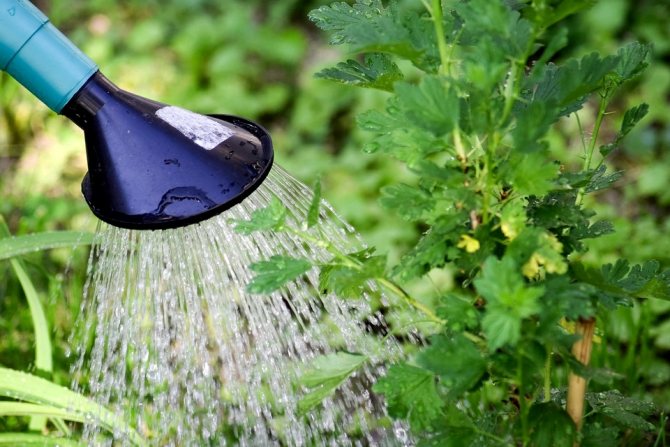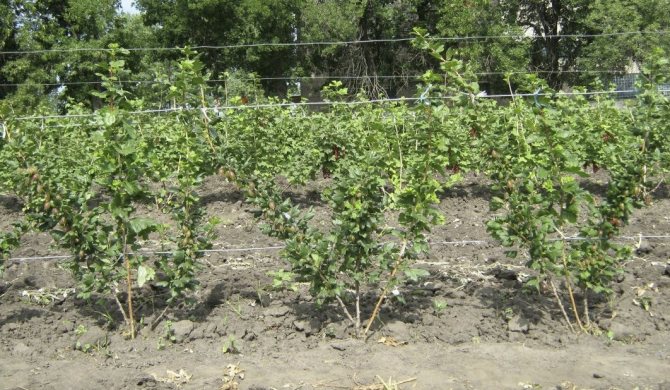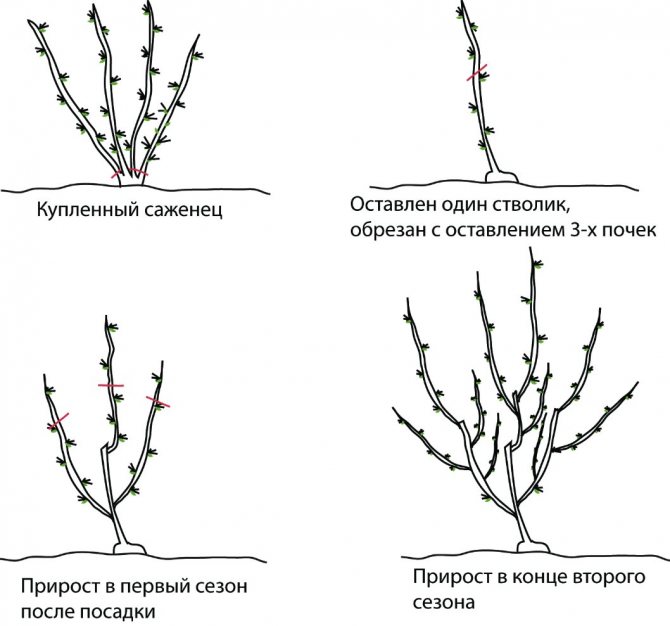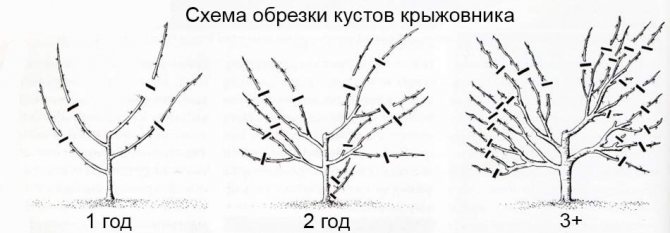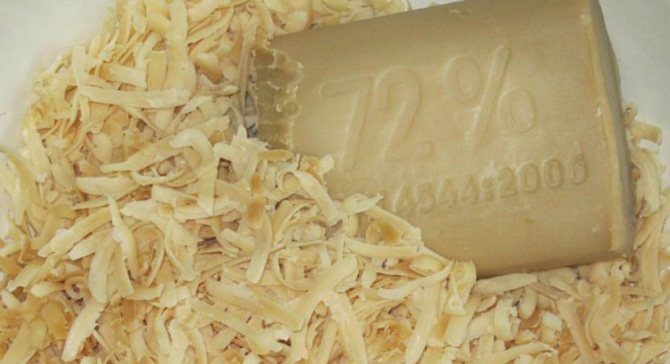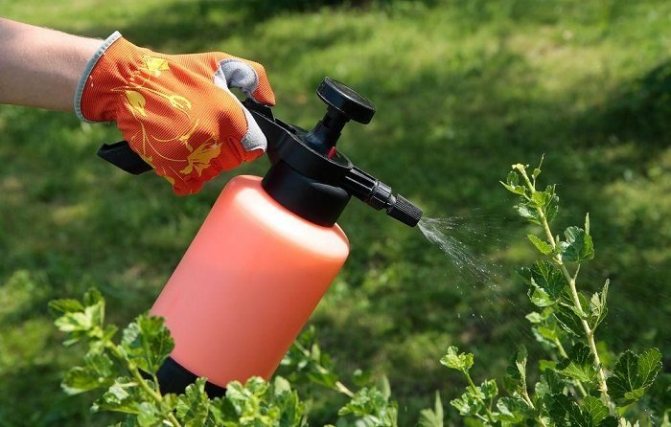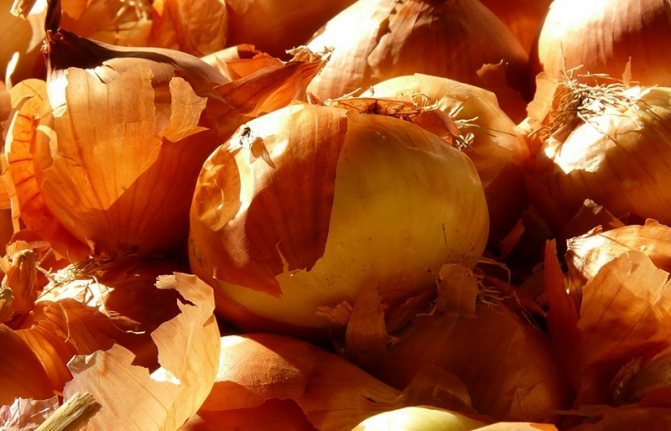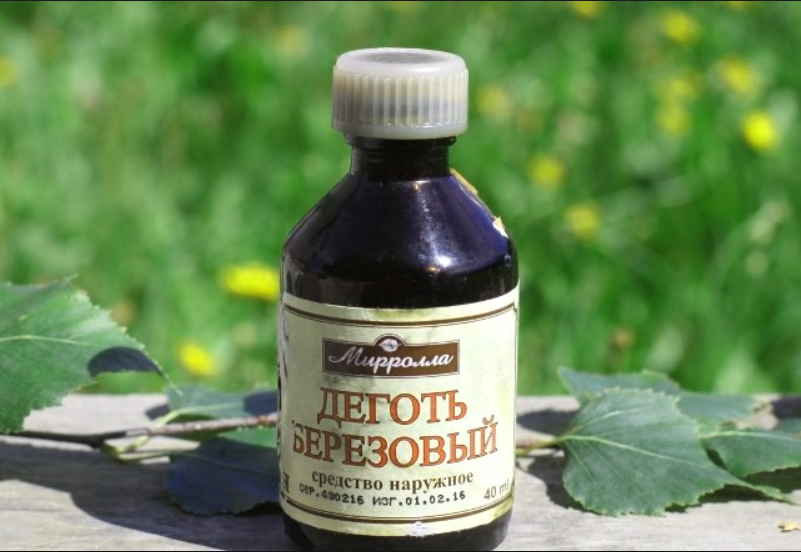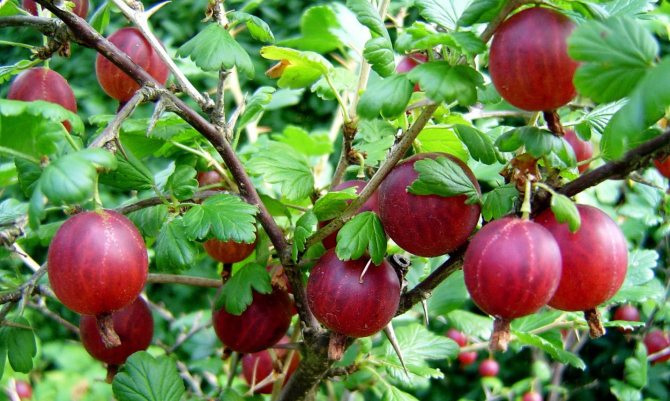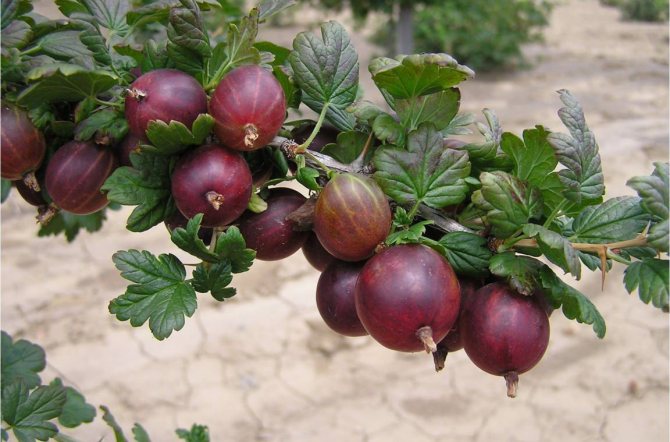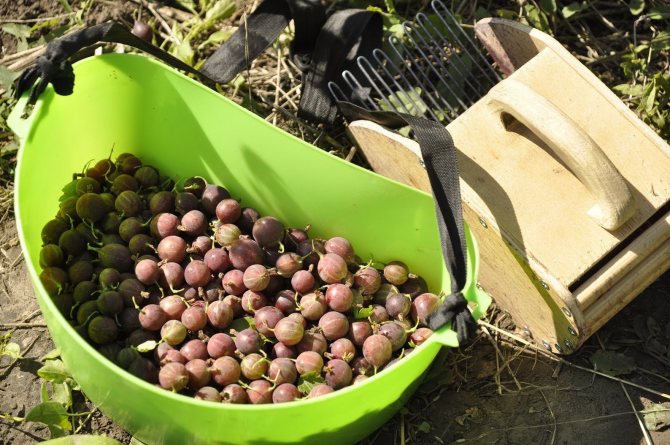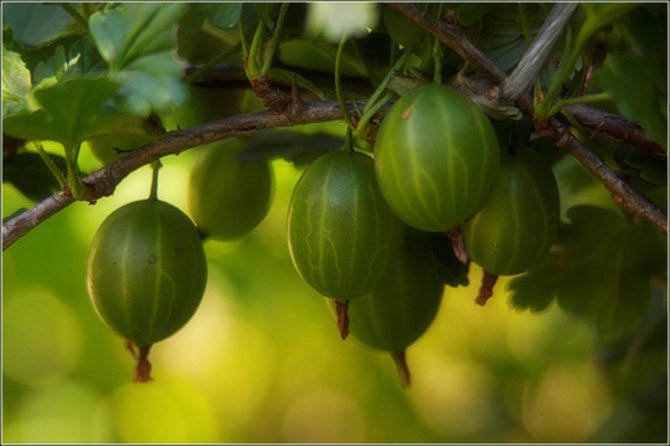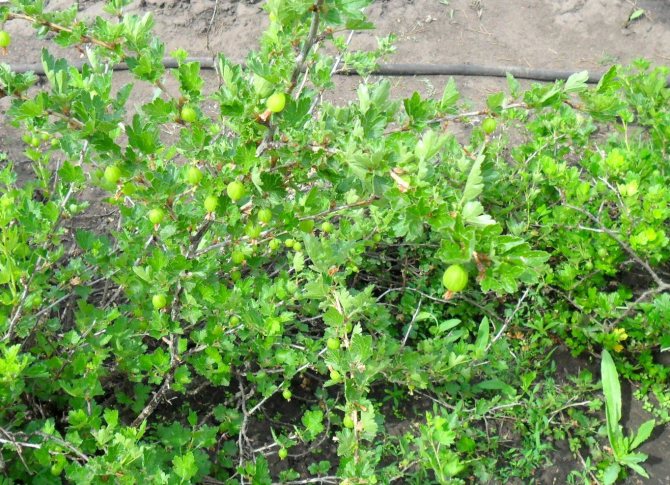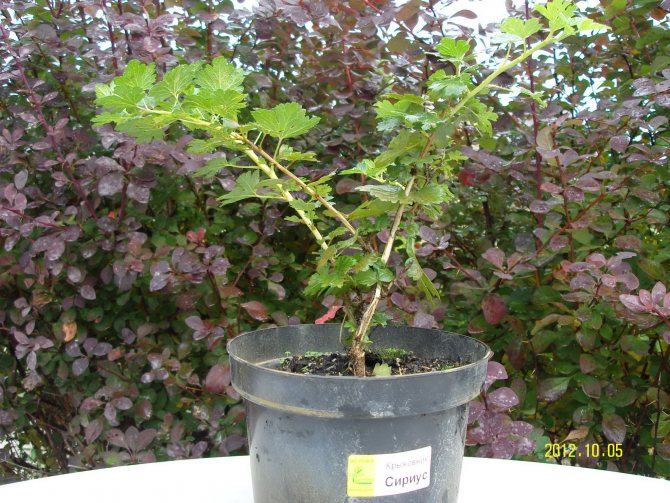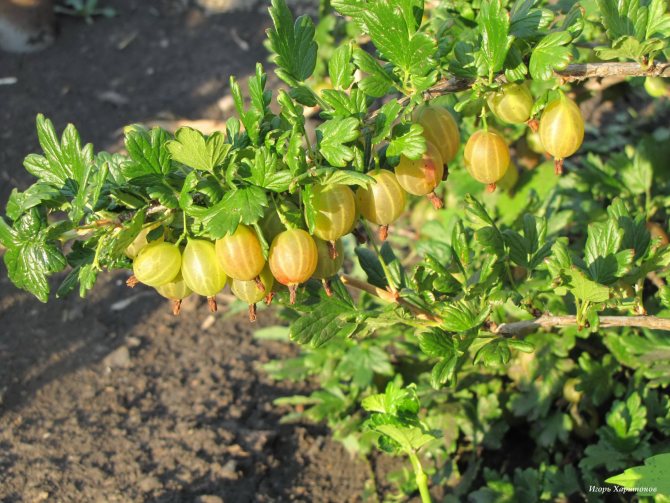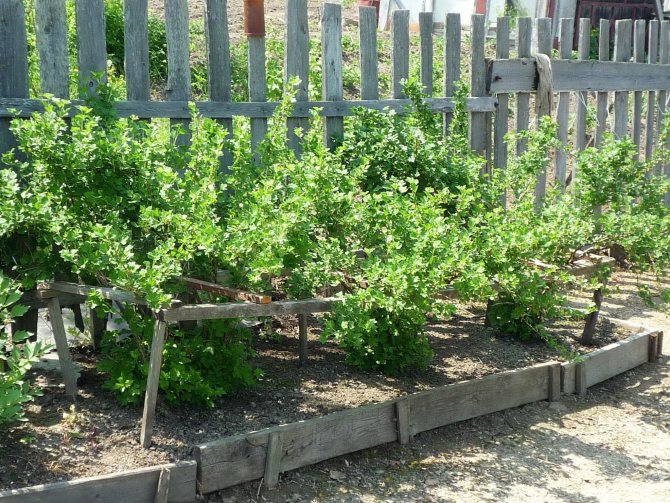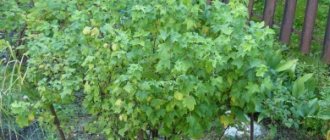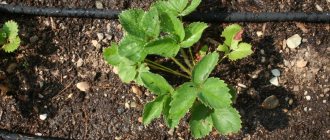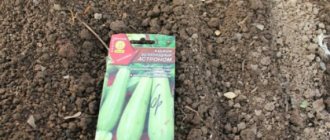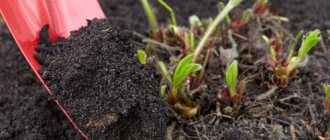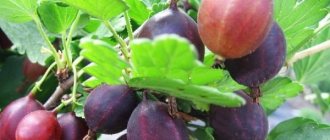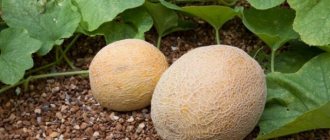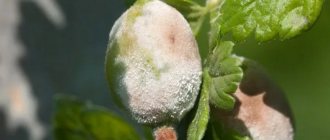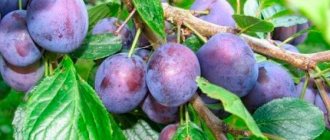Gooseberry is a berry of the Currant genus, of the Gooseberry family. Homeland - the African continent, it grows in America, Asia, Southern Europe, the Caucasus. Gooseberries were discovered in the 16th century; by the 18th century, breeders had bred about a hundred varieties. The bushes reach a height of up to 1.2 m, some varieties yield up to 25 kg per bush.
The bark is brown, peeling, on the shoots thorns in the form of thin thorns. Leaves are oval, rounded, with denticles, bright green. The plant is frost-resistant, withstands low temperatures down to -30 ° C. Berries - green, red, there are varieties with black fruits, purple.
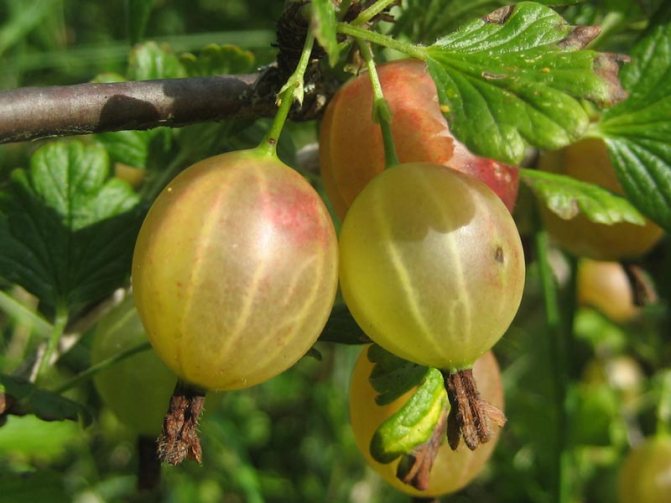
Gooseberry care: tips and tricks
Gooseberry is a berry of the Currant genus, of the Gooseberry family. Homeland - the African continent, it grows in America, Asia, Southern Europe, the Caucasus. Gooseberries were discovered in the 16th century; by the 18th century, breeders had bred about a hundred varieties. The bushes reach a height of up to 1.2 m, some varieties yield up to 25 kg per bush.
The bark is brown, peeling, on the shoots thorns in the form of thin thorns. Leaves are oval, rounded, with denticles, bright green. The plant is frost-resistant, withstands low temperatures down to -30 ° C. Berries - green, red, there are varieties with black fruits, purple.
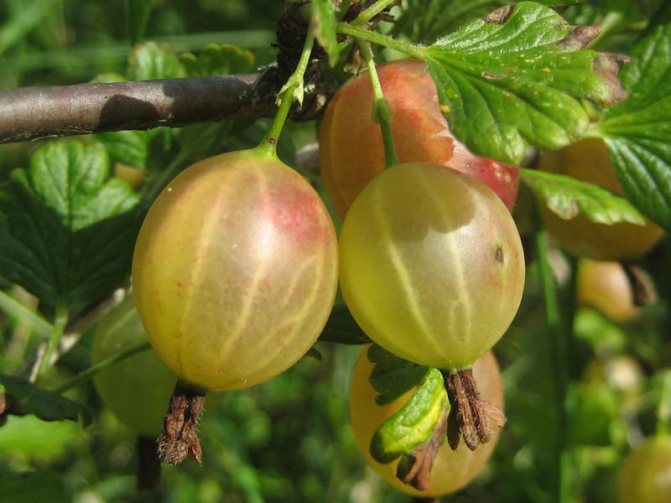

Popular gooseberry varieties
Among the many varieties of particular interest to gardeners are those that have developed resistance to powdery mildew and other diseases.
Malachite
The main property of the variety is resistance to sudden changes in temperature. The bush is spreading, its height does not exceed 1.5 m. Round berries weigh up to 7 g. They are distinguished by a thin skin with a large number of veins. The inside of the fruit is filled with seeds. Their taste is sour. Due to the long fruiting period, about 4 kg are harvested from the bush per season. Suitable for both cold regions and hot ones.
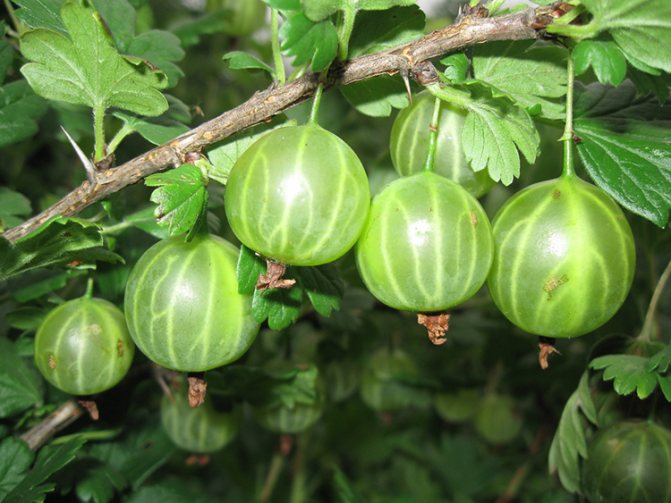

Neslukhovsky
The variety is not used in regions with cold conditions, as it can suffer from frost. The density of the bush is medium with a slight spreading. It grows up to two meters in height. Thick branches are a distinctive feature of the variety. Even under the weight of large berries growing densely on the bushes, they do not bend to the ground. The stems have double and single spines.
Oval fruits are dark red, sometimes purple. On average, one berry weighs 5 g. A fairly strong skin is covered with fine fluff. The taste of the fruit is sweet and sour. This variety is distinguished by an early ripening period.
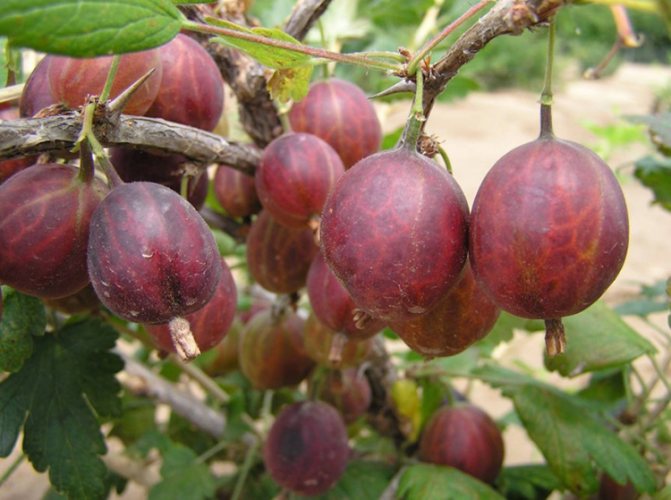

Ural grapes
A vigorous shrub with medium spreading of branches. The stems are covered with numerous thorns. Average yield per year - 3 kg. The weight of one fruit is almost 4 g. The collection of berries must be carried out on time, since the variety is prone to shedding. Emerald green fruit with a pleasant, slightly sour taste.
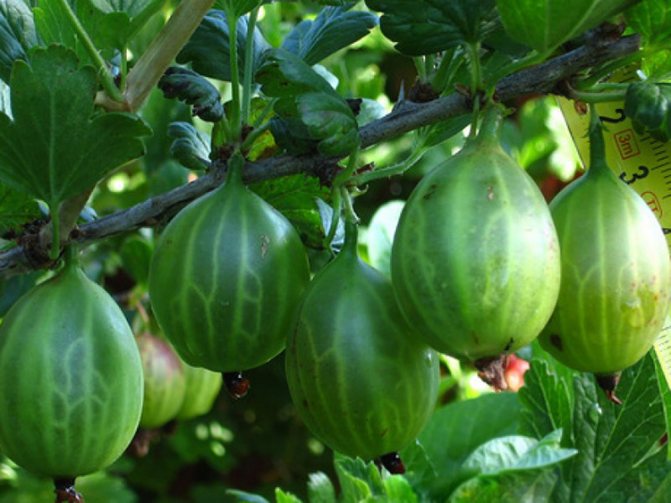

Gingerbread man
A vigorous shrub with medium spreading, growing up to 1.7 m in height. He needs careful maintenance and pruning, since under the weight of the berries his branches strongly lean to the ground. Thorns are few. Quite large round fruits with an average weight of 8g. Their color is deep red, the skin is dense. Fruits with a specific sweet and sour taste, even a slight astringency.
The variety is distinguished by long-term fruiting. The yield of an adult bush is about 10 kg of berries.Warming of the root system is recommended for the winter.
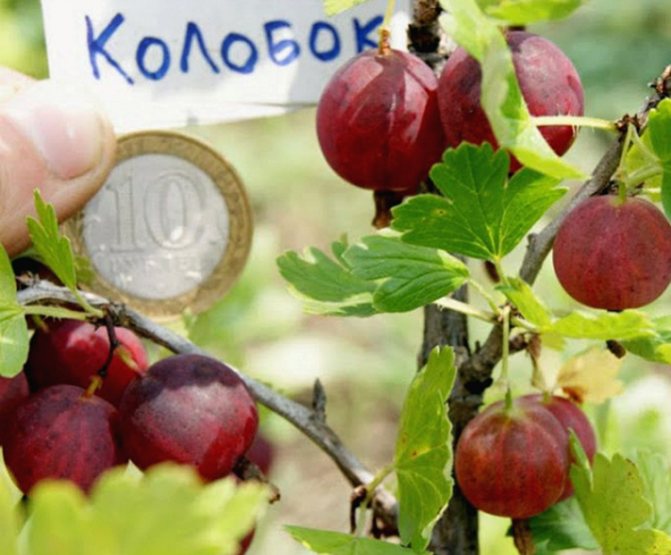

Commander
A bush with a weak spreading and densely growing branches, which reach a height of no more than 1.5 m. Thorns are absent, sometimes you can find in the root zone. The round fruits are dark red to almost black in color. Their transportation and storage is difficult due to their thin skin. The berries are sweet with a slight sourness. The yield of the bush is about 7 kg. The fruiting period is quite long. The variety is frost resistant.
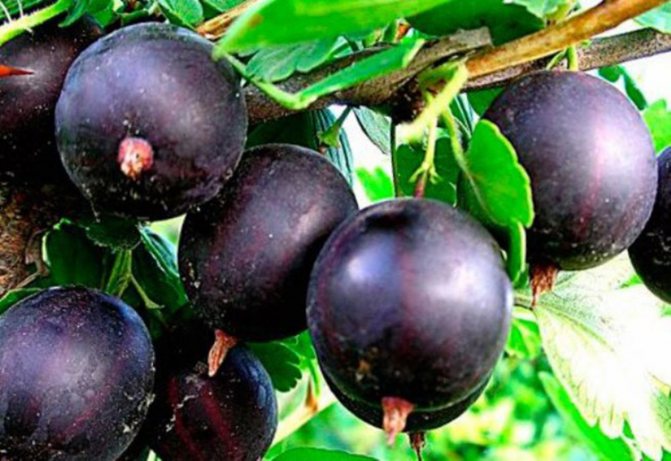

Russian yellow
A low (up to 1 m) spreading bush with few thorns. Oval berries with an amber tint. One berry weighs on average up to 7 g. The fruits are characterized by an average thickness, rare veins, and few seeds. They have a sweet and sour taste. The berries are not subject to shedding, they hang on the branches for a long time. The variety is resistant to low temperatures.
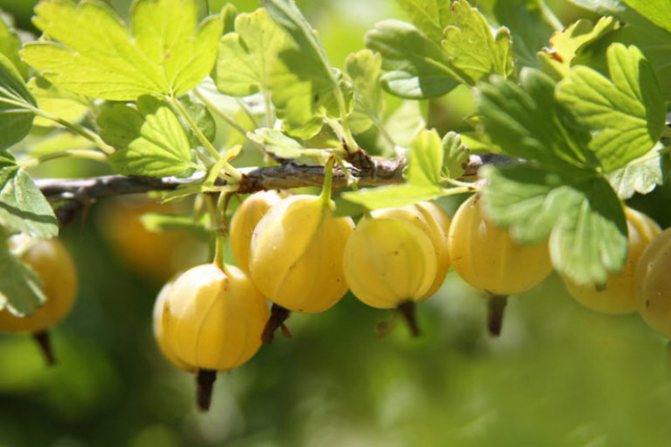

Gooseberry Care Tips
For gooseberries, as well as for currants, timely care in the open field is necessary. It is planted more often in the fall, but it is also possible in the spring.
He prefers:
- Sunny places, hills, where there are no north and east winds.
- Neutral or low acid soil.
- The distance between the bushes is at least one meter, in rows - up to three meters.
In order to avoid fungal diseases, it is not recommended to place gooseberry bushes in the lowlands. For planting, take annual or biennial seedlings with roots up to 30 cm. Soak them in a growth stimulator. In the fall, they are planted a month or one and a half before the first frost appears. Thus, the plant will take root and young roots are formed.
Humus 10 kg, superphosphate 150 g, potassium salt 60 g are poured into the landing hole. The seedling is deepened by 6 cm, the aerial part is preliminarily cut off, leaving 3-4 buds.
The plant propagates by layering, cuttings, dividing the bush. The gooseberry growing season begins in early spring. It blooms in May, the berries appear depending on the growing strip, in July-August.
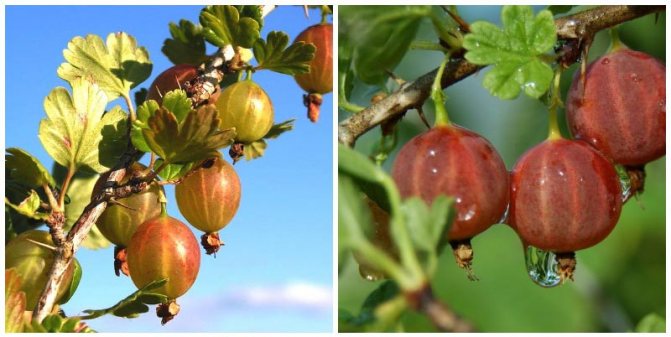

Recommendations for spring work:
- Pruning is carried out every year to obtain a bountiful harvest and prevent thickening of the bush. Cardinal pruning is not done in a single dose, so as not to destroy the bush. Pruned in spring and autumn, if young leaves have already appeared, you need to postpone it until autumn.
- From above, the bushes are not watered, they provide drip (this is necessary to avoid rot) or watered in grooves, grooves up to 15 cm deep.
- They loosen the earth with a hoe, a rake.
- In the early years, feeding is not applied if the bushes are sufficiently fertilized during planting. Then, once every three years, they must feed the plant without mixing organic and inorganic fertilizers. For depleted soil, nitrogenous fertilizers are needed every year, fertile every two or three years.
- The shelter is removed on time, otherwise the bushes will rot due to overheating.
When grown correctly, the plant bears fruit for about 20 years.
Spring planting of gooseberries
In order for a vending seedling to take root well and soon please with a good harvest, a number of rules are observed.
When and how to plant
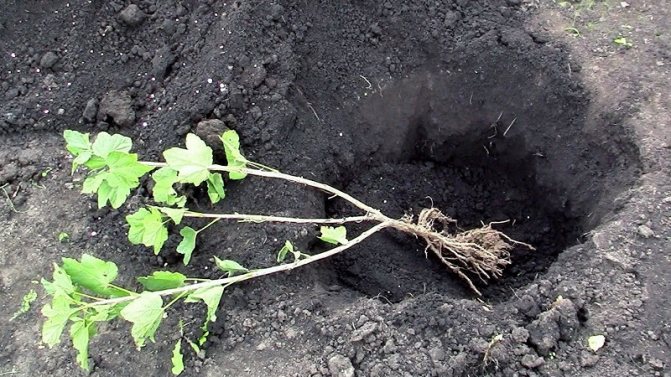

In different regions of the country, the planting of crops begins in accordance with the weather conditions of the area. The optimal time is before bud break, while the plant is still sleeping. If a seedling is purchased with a closed root system, that is, in a container, it can be planted later, even in summer.
When choosing gooseberry seedlings, sick and damaged plants are carefully examined and discarded. Preference is given to biennial bushes (they take root faster in a new place) and with an open root system, to make it easier to assess the condition of the plant. The gooseberry loves the sun, so it grows well in an open and well-lit place.
Sequence of actions for landing:
- A young bush is cut, leaving 4 buds.This will allow the weakened roots to take root faster and provide food for the aerial part of the plant.
- The seedling is dipped in a 1% solution of potassium permanganate for disinfection.
- Examine the root, get rid of dry and damaged roots and soak in a growth stimulator.
- A pit 50 × 50 cm is prepared.
- Rotted manure (10 kg / bush), wood ash (100 g), double superphosphate (50 g), sulfuric potassium (40 g) are poured into it.
- Fertilizers are mixed with soil and a hill is formed at the bottom of the planting hole.
- A seedling is placed on it, the roots are carefully straightened and gradually covered with earth, compacting each layer of it. For good tillering, the root collar is deepened by 5-7 cm.
- Next, a roller is made around the perimeter of the trunk circle with a height of 5-10 cm so that water is retained, watered (10 liters per bush) and mulched.
- After 3-4 days, the procedure is repeated.
Gooseberry care in spring
Timely spring activities for the care of fruit and berries in the future will lead to a large harvest. Experienced gardeners recommend doing them before the formation of the first buds. For this:
- They remove the winter shelter - the timing depends on the region, in the central and southern regions in early March, in the northern ones later. Then they rake out the mulch, the remains of last year's vegetation, branches. After that, all the garbage is burned, since fungal spores and insect larvae hibernate in it. If the bushes are not covered, but simply bent to the ground, they need to be raised.
- When the snow melts, cover the ground with dense material for several weeks so that the pests do not lay offspring.
- They are treated for pests and diseases - water the plant and the soil around with boiling water, but only until the buds appear. To do this, use a metal watering can. They are also sprayed with copper sulfate, Bordeaux liquid, fungicides: Fitosporin, Aktofit. In this case, the processing is carried out at an air temperature not lower than +14 ° C.
- Watered at the root or using a drip system during flowering. The top layer of soil is moistened by 30-40 cm, but not with cold water. Because of this, immunity decreases, there is a risk of being affected by fungal diseases.
- Do sanitary pruning at the beginning of March - remove dried, frozen, damaged, diseased, weak, twisted branches, criss-crossing shoots that are too close to the ground. The cut is made above the kidney, 6 mm away from the eye, at a slope of 50 °.
- In early May, the ground around the bush is loosened to a depth of 8 cm. Then it is mulched with straw, hay, peat, sawdust. This will reduce evaporation and prevent weeds. Dig up 10-15 cm between the rows.
- Feeding is done from the second year of planting. At the beginning of the growing season, add urea or ammonium nitrate. Scattered under the bushes, embedded in the soil by 5 cm, watered. For adult bushes - 40-60 gr, young - 30-40 gr. Potato peelings are also used - one kilogram per 10 liters of boiling water. After cooling, add 200 g of wood ash or bird droppings 1:20. Pour a bucket under each bush. Manure and humus. Before flowering, potassium sulfate is introduced - 40-50 grams under the bush. This is provided that the plants were not fertilized in the fall.
How to grow after planting
Further care for the young shrub is not difficult. It is watered, fertilized, loosened and pruned in a timely manner.
Features of growing on a trellis
The trellis method of cultivating gooseberries is becoming more and more popular with gardeners. It cannot be called simple, but with a certain care, the yield of the crop and the period of its fruiting increase significantly.
The trellis is convenient for picking berries and caring for the plantation, provides high quality harvest. The structure consists of wooden posts or metal pipes, between which a wire is stretched in three rows.
How to grow gooseberries on a trellis:
- Seedlings are planted along the trellis, keeping a distance of at least 1 m.
- A week after planting, the bushes are pruned: all shoots that grow to the side are removed, only strong, vertically growing ones are left and fixed on the wire of the first level. The bush must have at least 4 branches.
- Every year, as the shoots grow, they are tied to the second and third wires.
- Young shoots formed near the root collar are removed.
Summer gooseberry care
In the summer, they continue to work in the garden:
- Regularly loosen the top layer of soil no more than 6 cm, remove weeds.In hot and dry summers, the soil is mulched to retain moisture longer.
- Watered with warm water after sunset.
- If the bush is tall, it is tied to a support so that the branches do not break from the weight of the berries.
- Fertilize with organic substances during fruiting (in equal amounts compost and peat, manure with soil, chicken droppings with water 1:15), mineral fertilizers after harvest, in August with potassium and phosphorus (25 grams per bush).
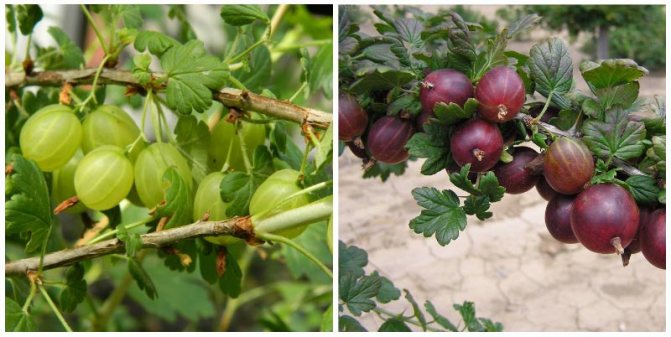

Gooseberry breeding methods
A low shrub with thorns is planted in every country house and garden plot. To breed it, you can use several methods - prepare cuttings or layering.
By dividing the bush
To preserve the gooseberry variety you like, old branches are removed from the dug up plants, leaving strong young shoots. With a pruner or ax, the bush is divided into seedlings, which should have roots, the top is shortened by 15 cm. Superphosphate, humus, potassium salt are added to the soil and parts of the plant are transplanted.
Root processes
The gooseberry takes root well, and any intact part can be used for propagation. Annual plants have a fibrous root, shoots extend from it, which are separated from the mother bush and planted in fertilized soil.
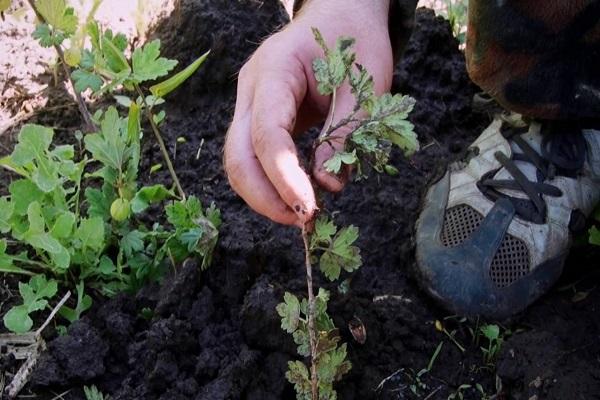

Reproduction by layering
It is most convenient to breed gooseberries vegetatively. The seeds are used to produce new varieties, but this process consists of several stages.
Horizontal layering
In the spring, until the buds have blossomed, a little earth is raked off the bush so that a depression is formed, the width of which should correspond to the size of the shoots that will fit into it. Then a dozen branches are picked up, a year or 2 years old, the tops are shortened by a quarter and placed horizontally in the prepared recess and fixed with hooks.
After a few days, these shoots will develop buds from which twigs will grow. Layers with the resulting roots are dug up in the fall and transplanted into the ground.
Arcuate
This method of breeding currants begins in the spring. Annual shoots are laid in rows in furrows, attached in the middle of the groove and sprinkled with soil. The tops of the increments are directed to the ground with an arc, tied to a support, shortened and spud with soil. Over the summer, the layers become stronger, but only one powerful seedling grows, which quickly pleases with the first berries.
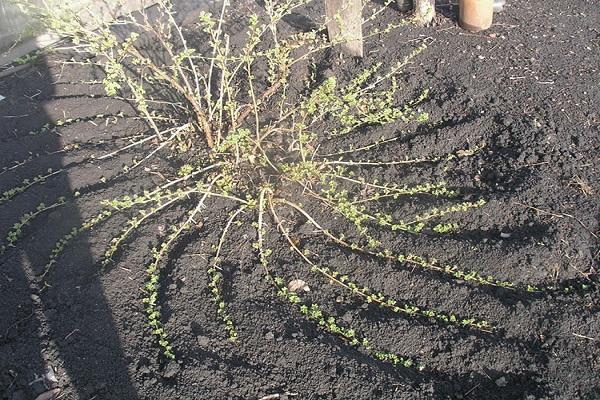

Vertical
To propagate gooseberries, the bushes are placed densely, and in the third year the plants are shortened, leaving 15 cm to hemp. After pruning, the branches develop rapidly, and when their height reaches 30 centimeters, they spud with earth. By the fall, the shoots have roots.
Gooseberry care in the fall
In order for the plant to winter normally, it is necessary to care for the bushes in the fall. Several events are held.
- The root zone is processed - they are cleaned of foliage, debris, rotten, crushed berries. Weeds and wheatgrass are removed. Then they are burned.
- Prevention of diseases and pests is carried out - after harvesting, plants, soil are sprayed with Bordeaux liquid, copper sulfate. They also use Topaz, Fundazol. If the plant is affected by a disease, it is destroyed or all damaged parts are removed.
- Pruning is done from mid-October until frost. Sharp disinfected secateurs. They cut out underdeveloped, broken, non-bearing branches located too close to the ground. Long ones are shortened by 1/3. Then the bushes are thinned out and the places of the cuts are sealed with garden pitch. If the bush is mature, more than five years old, the old stems are cut. Leave strong shoots, up to 6 pieces, evenly spaced throughout the crown.
- They feed - for autumn feeding you need: phosphate, potash fertilizers.
- Watering - in dry and warm weather from late September to mid-October. A groove dug around is filled with water. After being absorbed, it is covered with earth.
Let's figure out some of the nuances
Where to plant? Gooseberries love good lighting, so you should choose an open area, preferably on the south or southeast side of the site. So that groundwater does not interfere with the development of the root system, their level of occurrence should be at least 1.5 meters.
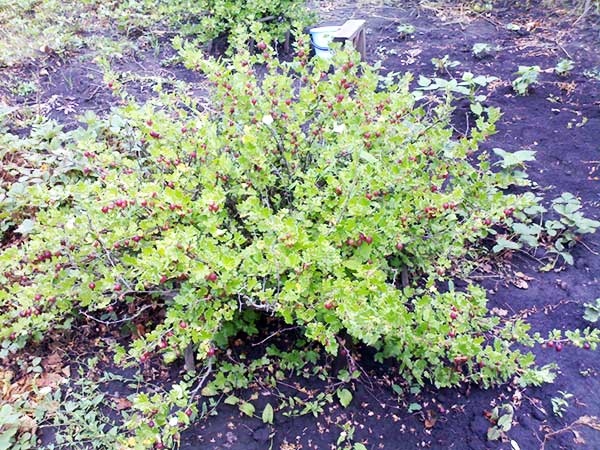

It is preferable to plant gooseberries on light sandy loam soils - the root system in this case grows rapidly, which ensures strong growth of the bush and good yield. Heavy loamy soils do not allow the roots to develop deeper, the plant survives due to the superficial root system. In such soils, the seedling should be rooted, planted at a slope, so that an additional superficial root system is quickly formed.
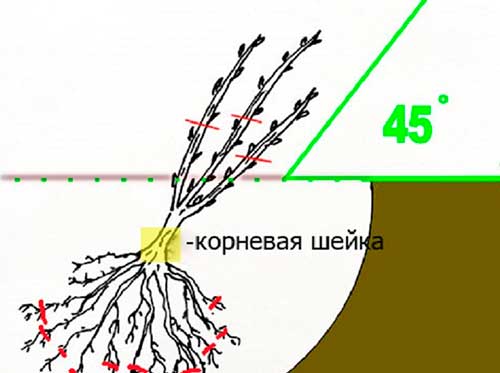

The planting scheme is as follows: the bushes are arranged in rows, the distance between the planting holes in a row is 1 meter, the distance between the rows is 2 meters. To increase the yield, it is allowed to plant two seedlings in one hole 60 cm wide with an interval of 20 cm between them. This planting scheme provides the plants with an optimal feeding area.
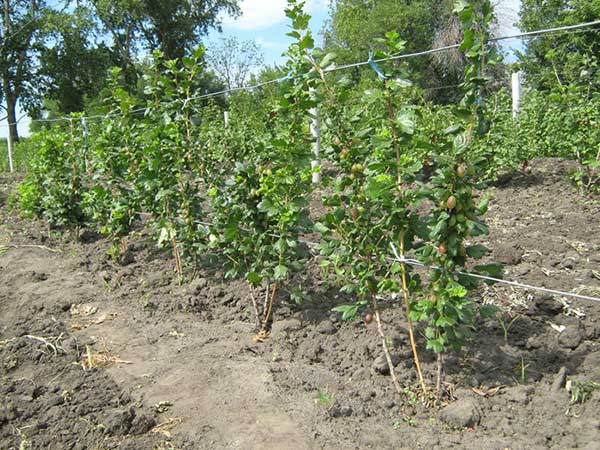

It is important to carefully consider the choice of planting material. Two-year-old bushes with a developed root system should be planted. The length of the roots should be at least 20 cm, while the excessively long roots are shortened to 20 - 25 cm before planting. Examine the shoots - they should not be infected with aphids, spheroteca.


Pest control of gooseberries
To prevent diseases and pests from infecting the gooseberry bushes, in the spring they do prevention according to all the rules. Appears when you ignore precautionary actions:
- Currant mite - the kidneys do not open, they die. Sprayed with infusion of garlic during the flowering period, after ten days. Take 50-100 grams per bucket of water.
- Spider mite. The leaves turn yellow, die off. Spray with onion peel, infusion of tobacco, wormwood, garlic, Metaphos.
- Blackcurrant aphid - there are red thickenings on the plant, the shoots are deformed. Before the appearance of the kidneys, spray with a 3% nitrophene solution. They are treated with an infusion of garlic during the budding period and then after 10 days. Or they use Vofatox, Metaphos.
- The glass-maker - she cuts into the shoots, makes moves there. The damaged branches are removed. Sprayed with 10% karbofos.
- Gooseberry sawfly - eats leaves to the veins. During bud break, after flowering they are sprayed with Karbofos, Aktellik.
- Moth is a butterfly. The berries turn yellow, rot, crumble. Destroy the affected parts, dig up the soil, spray with mustard infusion, Etaphos.
- Powdery mildew - white bloom on shoots, berries, leaves. Use drugs Hom, Topaz.
- Verticillary wilting - foliage turns pale, withers. Sprinkle and pour a 2% solution of Fundazole under the root.
- Butterfly - moth - leaves curl, fall off. Actellik, Fufanol are used.
- Anthractosis, spotting, rust - fungal diseases of the gooseberry. Sprayed with copper sulfate, Kuprozan, Phthalon, Nitrofen.
- The mosaic cannot be treated. Bushes are destroyed.
The most dangerous gooseberry diseases
Perhaps the most insidious disease of the plant is powdery mildew on the gooseberry, the measures to combat which, although there are, are far from always effective. You can know how to plant gooseberries and what the black negus variety is, but if you do not start treating this disease in time, the consequences can be most fatal. There are cases when the entire crop perished - and this is not a joke.
The first signs of the disease appear when the gooseberry transplant has already been performed. White bloom appears on the leaves and already set fruits. Over time, it turns into a brown crust. Ripening of berries stops, leaves disappear, and shoots dry up.
The fight against powdery mildew on gooseberries is reduced to treating the bushes with Topaz and HOM preparations according to the instructions. The most susceptible to infection are such varieties as black gooseberry, Russian and Triumfalny.
Sirius gooseberry and some other species can be affected by white spot, mosaic, goblet rust. The mosaic is especially dangerous. When a gooseberry is affected by a mosaic, treatment and care comes down to the fact that you just need to dig up diseased plants and burn them. You can defeat rust and anthracnose by sprinkling the bushes with nitrafen or copper sulfate.
Spring bush care
The beginning of spring care for gooseberries falls at a time when the snow has already melted and warmed a little. It is not worth delaying the work: the bush wakes up early, it is important to be in time before bud break. After when they bloom, it is undesirable to carry out pruning and processing.
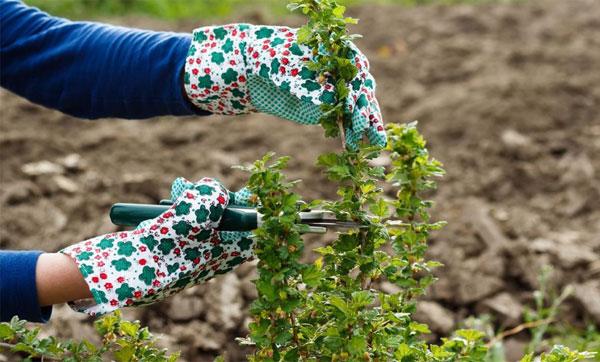

Pruning
After the snow melts, the first step is to remove the insulating mulch. It can contain pests, so it must be dried and burned. If the shoots were tied and bent to the ground, then they must be released so that they return to their previous position.
Further, in the process of caring for gooseberries in early spring, pruning is carried out. It depends on it how the bushes will develop and bear fruit, it also affects the yield. If the pruning was carried out in the fall, then you just need to inspect the bush and remove the frozen, broken and pest-damaged shoots. Cut them with pruning shears at the root or partially cut off a part to healthy tissue.
If the autumn pruning work was not carried out, then you need to cut out old branches (over 5 years old), with dark, cracked bark, diseased, weak and short, horizontally located and unnecessary thickening, especially those directed to the center of the bush. When old branches are removed, the same number of replacement shoots are left.
The shoot is cut off over the bud located on its outer side, the cut is made oblique. They retreat from the buds by 5 mm, if cut off higher, then this part of the branch will dry out, and then drying out can spread to the entire shoot.
Treatment against diseases and pests
The simplest and most affordable way of processing is pouring hot water, almost boiling water over the shoots. The heat kills pathogens and pests hiding in the kidneys and under the bark. The processing of gooseberries with boiling water is carried out in early spring, always with closed buds, if they are already swollen, watering is not carried out. Water is boiled and poured into a watering can with a fine-mesh nozzle, then the bush is watered. The water temperature should be about 80 ° C, this is how much it takes to kill the pests, but not burn the plant. Water the gooseberries with boiling water from a height of about 0.3 m, spending about a bucket of water for 1 bush. You need to pour not only on the plant, but also on the ground around it.
In addition to hot water, chemical or biological preparations can be used for the spring treatment of gooseberries: Fitosporin, Actofit, Trichodermin, Lepidocid, Bitoxibacillin, Gaupsin, Bordeaux liquid 1%, 3% copper sulfate solution. For prevention, folk remedies are also suitable - garlic, ash, mustard, tobacco, soap and soda, onion infusions. In general, you need to spray gooseberries first of all with harmless infusions, and then, if there is no effect from them, move on to more powerful drugs.
Watering, loosening and mulching


After winter, mulch is removed, the soil is deeply loosened to increase its permeability to water and air, and at the same time to destroy weed shoots. Lay a new mulch of straw, hay, sawdust with a layer of at least 10 cm.
There is no need to water the gooseberries in early spring; the winter moisture remaining in the moist soil will suffice. The first abundant watering is carried out before flowering, if it is already hot enough and the earth has dried up. In the future, watering is mandatory only in the heat; in moderately humid weather, adult rooted bushes do not need to be watered.
Top dressing and fertilization
The seedlings planted last fall do not need to be fed in the spring, as the soil still has all the nutrients in the right amount.Adult bushes are fertilized starting from the 2nd season. They use organic matter and mineral fertilizers, alternating between them. The first feeding falls on the period before flowering, the second - at the time of setting the berries, the third - after they are harvested.
For the first spring top dressing, urea is used (50-60 g per bush), 0.3-0.4 kg of ash, which is embedded in the soil during spring loosening. Or a complex of humus and 80 g of superphosphate, 40 g of nitrate, 20 g of potassium chloride. Urea does not affect the acidity of the soil, so it can be used on acidic soils.
Before flowering, fertilize with slurry (1 to 7) or chicken droppings (1 to 12). 1 time in 2 seasons, up to 15 kg of rotted manure is applied under the bushes. Chlorine fertilizers are not used for feeding gooseberries.
Experienced gardening tips
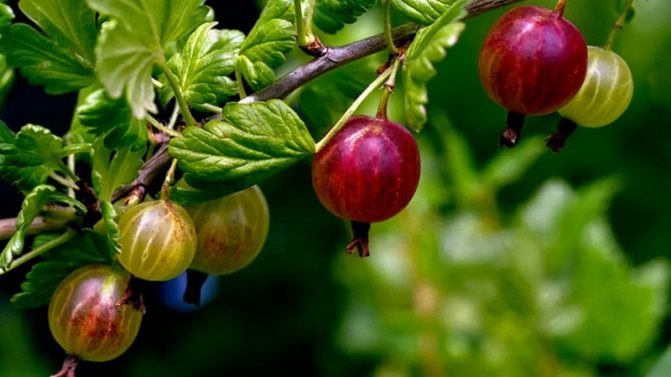

Experienced summer residents themselves adhere to the rules of planting and caring for gooseberries and give others advice on how not to harm the plant and get a decent harvest.
Mistakes to Avoid
Novice gardeners sometimes make mistakes:
- Events are carried out with a delay, when the sap flow has already begun and the kidneys began to swell.
- Pruning is done incorrectly or ignored, trying to keep more shoots in order to increase the yield of the bush. This is a misconception.
- An excessive amount of fertilizer is applied or not fertilized at all.
- Do not carry out preventive treatments to protect gooseberries from pests and diseases.
- Irrigate the bush from above when only root watering is needed.
- Peat is used as a heater, and it is a breeding ground for pests and their offspring. It is advisable to use it only in regions with severe winters.
It is interesting:
How gooseberries reproduce - all ways
Sweet and juicy gooseberry variety Yubilyar
The sweetest and largest gooseberry: description of varieties
Typical mistakes in gooseberry care in spring
Gardeners who decide to grow gooseberries and who were not previously familiar with it may make some mistakes in agricultural technology. The following tips from seasoned gardeners will be useful to them:
- It is necessary to take off the winter shelter in time so that the branches do not trample in the heat and humidity;
- it is impossible to carry out treatment on already opened kidneys;
- we must sparingly cut out all unnecessary shoots, even young and thick ones, but thickening the bush;
- carry out rejuvenating pruning in 3 years, cutting out up to 1/3 of the shoots at a time, and not all at once;
- it is necessary to water at the root, and not by sprinkling, which is why the gooseberry gets sick with fungal diseases; pour water into a groove dug around the circumference of the bush at a distance of 0.4 m from its center;
- loosen shallow near the plant so as not to catch the roots;
- observe the norms when diluting fertilizer solutions, do not overfeed the plants.
If you follow these recommendations, then there should be no problems with growing gooseberries in your personal plot.
Gooseberry cultivation history
The homeland of the wild gooseberry is North Africa and Western Europe. This berry, unlike grapes, was not known to the ancient Romans and Egyptians, but it also has a long and confusing history. In Kievan Rus, gooseberries were grown already in the XI century, until the XIV century, it was actively distributed in the royal and monastic gardens. But they were semi-wild bushes with small and sour berries. They were called "bersen", which is translated from Tatar as "rosehip".
The French took up the cultivation of gooseberries. This is mentioned in church psalms of the 13th century. The first description of the culture was given by the French physician and botanist Jean Ruel in 1536, and the first botanical illustration dates back to 1548. Its author is a German scientist, one of the "fathers of botany", Leonart Fuchs.
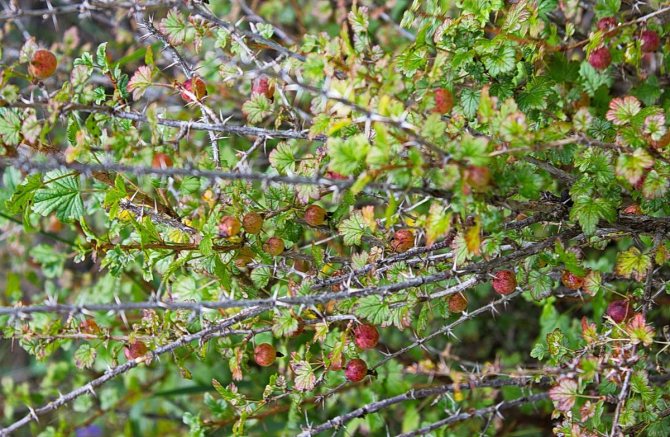

Wild gooseberry - the ancestor of many cultivars, grows among bushes, on rocky slopes
The modern name for the gooseberry appeared due to its thorns and the similarity in this sense to the thorn bush. According to the Gospel, the crown of thorns was placed on the head of Jesus during his mockery.In different European countries, gooseberries began to be called "Christ's turn" (Krisdohre), "the berry of Christ's thorn" (Kristólbeere). The root "kryzh" in Old Russian also had a direct bearing on the cross.
The British took up the cultivation of large-fruited varieties. They managed to increase the weight of the berries by 4 times. By the 17th century, almost all known varieties were of English selection. Russian botanists also became interested in the cultivated gooseberry, European seedlings began to be imported to our country and replaced with small-fruited and unproductive bushes. But at the beginning of the 20th century, a terrible disease, powdery mildew, was brought from the USA to Europe, which destroyed all cultivated plants that were unstable to it. Therefore, the first English varieties, which gave berries larger and tastier than modern ones, did not reach us. All breeding work began anew.
Harvesting
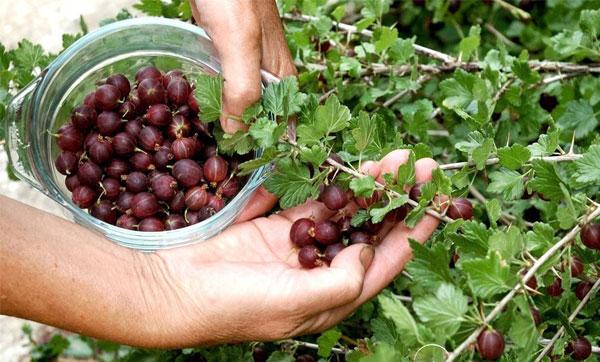

Gooseberries ripen in July-August. They ripen mostly amicably, so you can collect them from the branches almost at the same time. Despite this, the harvest can be extended for a month: the fruits sit firmly on the branches and do not crumble even when overripe. The yield and size of berries may vary and depend on the variety. Fruits are collected in baskets or jars, sent for food, processing or storage. They are stored in the refrigerator, not washed, in sealed containers for 1-2 months; in frozen form, gooseberries can last until the next harvest.
Pruning and shaping
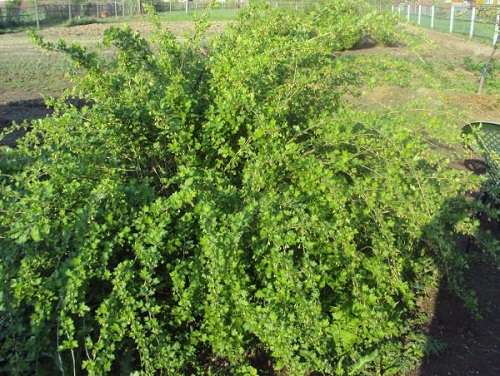

If we want to get high yields of gooseberries every year, then we cannot do without correct and timely pruning of gooseberries. And some methods of forming bushes not only increase the yield of the plant, but can also create a very effective decorative shape of the bush.
The gooseberry is quite a plastic plant, so it can be given the most exotic forms. Besides classic
There are a number of other ways to form gooseberries, for example: in the form
stanza
,
one-shoulder (vertical)
and
two-armed cordons
,
on the trellis
.
Consider at the beginning classic way
pruning and shaping a bush. Usually, by the fall of the first year, several annual shoots grow in the gooseberry. Of these, we need to select 5-6 of the strongest shoots, which are directed in different directions and are located more conveniently relative to each other.
We leave these shoots, and cut the rest at the soil level. So every year we add no more than 3-4 new shoots, and remove the extra, sick, weak ones lying on the ground.
By the beginning of mass fruiting (by about 5 years), we will have a well-formed bush consisting of 18-20 branches of different ages.
Then, when the bush reaches 6-7 years of age, we begin to annually remove 3-4 old branches that have already begun to bear fruit poorly, leaving them to replace the same number of new annual shoots.
This pruning is best done either in the fall after harvest and leaf fall, or in early spring before the buds swell.
We shorten the replacing (zero) shoots by 1 / 3-1 / 4 of the length, since they usually grow for a very long time, do not have time to prepare for winter and freeze slightly. In addition, with such pruning, shoots form flower buds much better, ripen and overgrow.
For the same reason, we also shorten strong shoots of higher branching orders.
And we shorten the main skeletal branches in order to stimulate the growth of lateral shoots and, thus, we somewhat rejuvenate the branches of the gooseberry bush.
This type of formation of a gooseberry bush as elite
best used in very harsh climates or when growing frost-resistant varieties.
And from the point of view of yield, of course, this formation option is not interesting, since the total number of branches is very small, which means that the yield is small.
In addition, the berries turn out to be low from the soil surface, so there is a possibility of their contamination, and the bush takes up much more space than with the classic formation.
Another way of shaping is one-shoulder cordon
also does not shine with productivity, since it is a stem or branch with overgrown branches.
Two-armed cordon
- these are already two shoots, which are located almost horizontally, with numerous vertical branches. This type of formation is not suitable for everyone, although the bush looks very impressive and bears fruit perfectly in a very small area near the walls.
But such a formation of a gooseberry bush is very laborious, moreover, with periodic renewal of the horizontal branches, the bushes will not yield a crop.
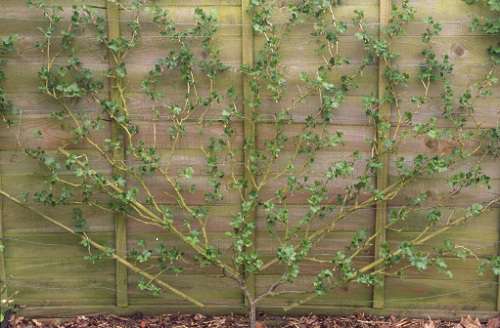

But the shaping on the trellis
much easier and, in terms of yield, more productive. There are several options for such a formation, but the following is closer to the classic one.
We plant the bushes on a strip 1.5 m wide, then we place the strongest and most illuminated branches vertically on two trellises that stand opposite each other.
With this method of forming, the number of branches is also limited and they are located only vertically, so the bush becomes flat. This arrangement of branches is good because it makes it possible to plant gooseberries on a narrow strip of soil, and this is very valuable for small summer cottages.
This method of shaping gooseberry bushes still has two significant drawbacks.
First, you have to remove good horizontal branches, which for some reason cannot be directed vertically.
The second is that the yield on such bushes, due to the limitation of the number of branches, turns out to be below the potential.
Therefore, the yield of the bushes can be increased if we combine the trellis formation with the classical approach, in which the branches are placed at an angle of approximately 45%.
This type of formation is called "A hybrid of trellis and classics"
and is recognized as the most optimal for gooseberry bushes.
I'll tell you a little about the features of this formation. At the initial stage of development of the bushes (approximately the first 2 years), we prune them in the usual classical way, which was described above, and, thereby, form a base of strong branches.
Then, in the third year, we install a temporary square around the bush, and if we have several bushes, then a rectangular fence with a height of about 30-35 cm and evenly distribute the branches inside it.
In the fourth year, we install wooden trellises with a height of 2 m inside this fence. If our bushes are planted with a ribbon, then the trellis is best made in the form of the letter "P", and if alone, then we make a quadrangular trellis, which will be like an additional fence located inside main.
To these trellises we tie up that part of the branches that fits along the slope of the shoots, so that they cover as much of the light space as possible.
Then, already in the fifth year, when our bush has already had a large number of long strong branches, some of which lean too low, we replace the temporary fence with a permanent one, moreover, we make it higher than the temporary one (about 50-60 cm) and larger in area.
After that, we evenly redistribute all the branches over the fence and, if necessary, tie some of them to the trellises.
The main advantages of this type of molding are as follows:
- increase in yield per unit area by about 2 times;
- the quality of the berries increases, since the best illumination of the shoots is achieved;
- a large number of strong shoots are formed, which are more resistant to diseases and more productive;
- very effective appearance of the bushes, especially during flowering and fruiting.
And the disadvantages of this formation option include the fact that, firstly, it cannot be used for non-frost-resistant varieties, since there are no guarantees that tall bushes will be covered with snow before the onset of frost; and secondly, it will take much longer to form gooseberry bushes in this way compared to the classical approach.
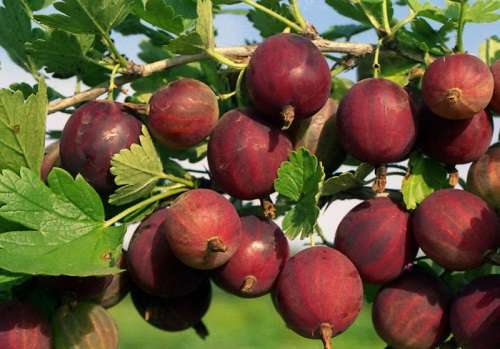

Finishing with this another article about our northern grapes, I want to ask you, dear readers, to share your secrets of growing this culture.
In the next articles, I plan to talk about the methods of breeding gooseberries, about the most common diseases and pests of this culture and about measures to combat them.
And in conclusion, I would like to invite you to watch the video "How to grow a gooseberry correctly." Look, I think it will be interesting.
Autumn care, preparation for winter
After the entire crop has been removed, the leaves will crumble, and the autumn pruning of the shrub is carried out. Then water it with plenty of water if there is no rain and the soil is dry. Taking care of gooseberries in the fall also includes preparing for winter: covering the base of the bush and the soil around it with mulch. Its layer should be at least 15 cm. In the northern regions, shoots are also covered: they are tied together, carefully bent to the ground and pinned. Cover them with roofing material, spruce branches. In the spring, the shelter on the plant and soil is removed as soon as the snow melts. If you are late, with a sharp warming, the plants under the insulating material may overheat, the buds will die.
Features of care depending on the region
Spring work on the care of gooseberries has its own nuances, depending on the climatic characteristics of the region:
- In the south, events begin from the first days of March.
- In the middle lane (Moscow region), work begins in 1-2 ten days of March, depending on weather conditions. Plant care consists of ordinary activities without any special features.
- In the northwest (in the Leningrad region), as well as in the Urals and Siberia, in connection with the long winter, spring care for gooseberries is carried out in the 1-2 half of April and even the beginning of May. In the north, recurrent frosts often occur, which ruin the flowers. To avoid loss of yield, experienced summer residents recommend monitoring the weather and, if necessary, covering young plants at night.
Different climatic conditions of the regions dictate to gardeners their own rules for growing gooseberries. They choose zoned varieties adapted to growing in a specific area, and in the northern regions they pay attention to frost-resistant gooseberries.
Gooseberry: processing in the fall
In order for the gooseberry to be healthy, annually pleasing with a rich harvest of berries, you need to take care of the bushes in the fall. Preparing gooseberries for winter includes a certain number of activities that must be performed:
- From under the bushes, it is necessary to remove the fallen leaves, pull out the weeds.
- Old branches, damaged shoots must be cut off.
- You need to water, and dig up at the trunk.
- It is necessary to apply organic and mineral fertilizers.
- Obligatory treatment for diseases.
- The soil must be mulched.
- The gooseberries need to be covered.
Autumn cleaning of the site
After collecting all the berries, you need to think about cleaning the site. Sometimes the gooseberry begins to actively shed its leaves, and this is most often due to the presence of various fungal diseases: from white spot to anthracnose.
Leaving infected leaves under a bush in the fall can kill the bush. During the winter, the fungus will grow, in the spring it will no longer be able to cope with it.
The foliage is not simply harvested, it is taken outside the garden and burned. Even if there were no signs of the disease, it is necessary to remove all the leaves, preventing them from rotting, giving a chance to pests and diseases. It must be remembered that, most likely, the foliage will need to be removed several times during the season, but it will be worth it.
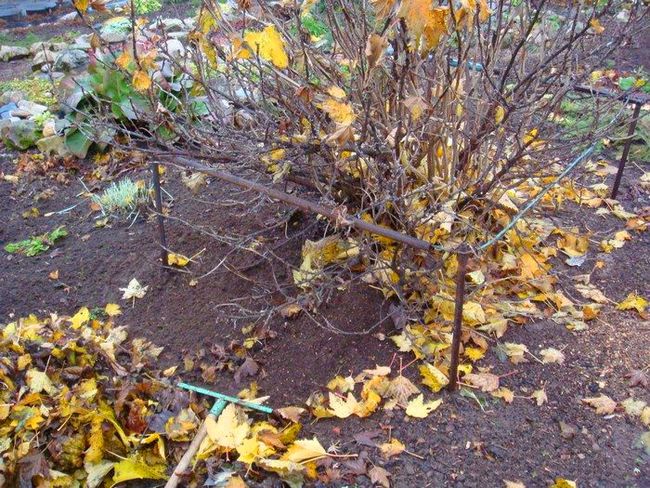

When and how to prune gooseberries
Some old shoots begin to bare in the middle of summer.Later, they will definitely dry out, so you should not take care of them. It is better to cut them off as soon as the first signs of drying are noticed in order to prevent microscopic fungi from spreading the spores.
How to prune gooseberries for the winter? In the fall season, it is necessary to cut off all old branches that are more than six years old. Some young branches, but too thin or damaged, also need to be cut.
Many budding gardeners find pruning gooseberries to be a very difficult procedure. In fact, this is not the case. Branches that have already borne fruit are clearly visible, they cannot be confused with young shoots. Old branches have dark bark, they have little growth.
A properly pruned bush should have a free center. Gooseberries are arranged in a circle, there are usually many branches in the center, neither light nor heat reaches there, so there is no chance of setting the fruit.
When pruning all old shoots in the fall, young ones grow quickly on the bush. Therefore, gooseberry bushes are formed annually.
It is necessary to monitor the condition of the bushes. Sometimes it happens that the shoots get confused, and the bushes, planted too close, close up. Then it is necessary to shorten the shoots, thin out the excess, this will improve the quality of the berries.
Do you need digging?
Some gardeners believe that there is no need to dig up shrubs, because it is very difficult. Indeed, digging is difficult if several berry bushes grow in the garden next to each other. But this is an important measure to prevent the development of diseases and pests.
The soil in the near-stem circle must be dug onto the bayonet of the shovel. So that digging does not cause difficulties, shoots creeping along the ground must be tied up with twine. After digging it is removed.
Top dressing of gooseberries
What top dressing do gooseberries need in the fall? In the fall, the shrub needs fertilizer containing phosphorus and potassium. The main thing is to avoid nitrogen fertilizers. You can add organic matter, only humus or compost is suitable for this. But fresh chicken manure and slurry in the fall should be avoided.
Furnace ash is an excellent fall fertilizer for gooseberries. This is a universal top dressing, it will add a lot of microelements to the soil, improve the acid-base balance of the soil. If no stove ash is found, ash left over from burning leaves and branches will do.
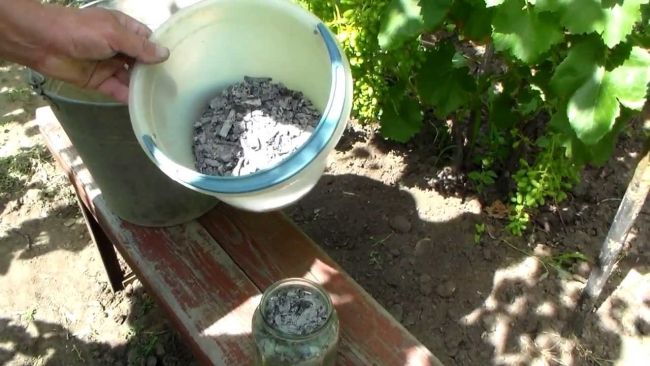

In the fall, up to three kilograms of ash are brought under each bush. Having scattered the ash, you should rake it with a rake. In the spring, melt water and rains will carry all the nutrients deep into the soil. This will provide the shrub with phosphorus and potassium when the plant needs them most.
Universal fertilizers that are sold in any store of agricultural products are also suitable for autumn feeding. The main thing is to carefully read the instructions and find out the composition. It should contain zinc, potassium, manganese, phosphorus, boron. Fertilizer is applied diluted.
Berry processing
Treatment with phytosporin in the fall is needed even for perfectly healthy gooseberries. This tool is needed to improve the microflora, it destroys the pathogenic environment. When the signs of disease have already appeared, the phytosporin treatment is carried out after the berries are completely harvested. To free the shrubs from infections, you need to use the drug according to the instructions.
After leaf fall, cleaning weeds and digging up the earth around the bushes, you need to treat the bushes with a solution of iron sulfate. Processing is carried out from a spray bottle, one bush will need 300 ml. Instead of iron sulfate, urea can be used. A 5% solution will do.
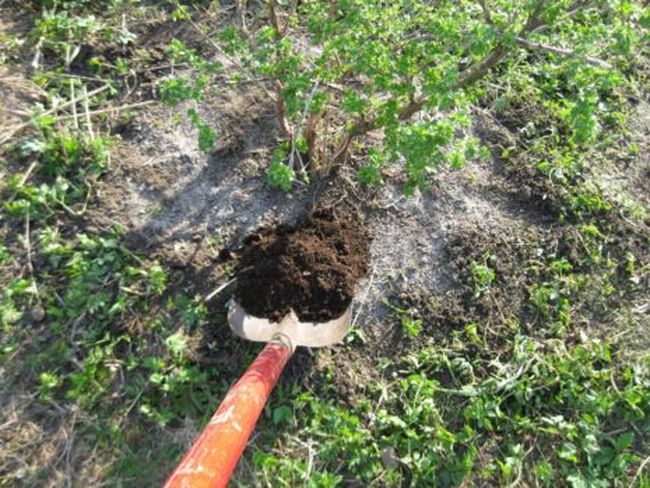

Mulching gooseberry bushes
If the gardener does not have the opportunity to regularly visit the garden in late autumn and take care of shrubs, it is worth mulching. It is best to use organic products (peat or compost) for mulch. Mulch will help retain moisture and prevent weeds from overgrowing.
And it also has a special function - it protects against frost. Experienced gardeners use straw, sawdust, chopped pine bark for autumn mulching, scattering the mulch in a layer of 12 cm.
Watering gooseberries
Many gardeners forget about late fall watering. But this is a very important stage in the autumn work, which cannot be neglected. And if the autumn is dry, you can't do without watering at all. Young shoots will not be able to develop normally, which means that a big harvest can not be expected.
You need to shed gooseberry bushes abundantly so that the root system, which lies very deep, receives moisture in abundance. It is necessary to pour about 30 liters of water under each bush.
When to water? It all depends on the area where the gooseberry is grown. The main thing is to water it before the first frost. Typically, in the northern regions, watering is carried out in early September, in the south a month later.
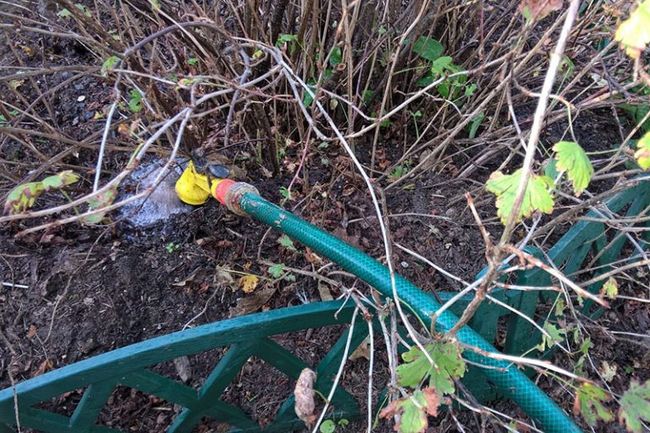

Removing winter shelter from gooseberry bushes
As soon as the snow melts and you can get close to the bushes, you need to remove the insulation that was used to cover the bushes for the winter. In the northern regions, where the climate is unstable, the shelter is removed in layers. First, the branches or spruce branches are thrown back, then the covering material (burlap, polyethylene, spunbond, etc.).
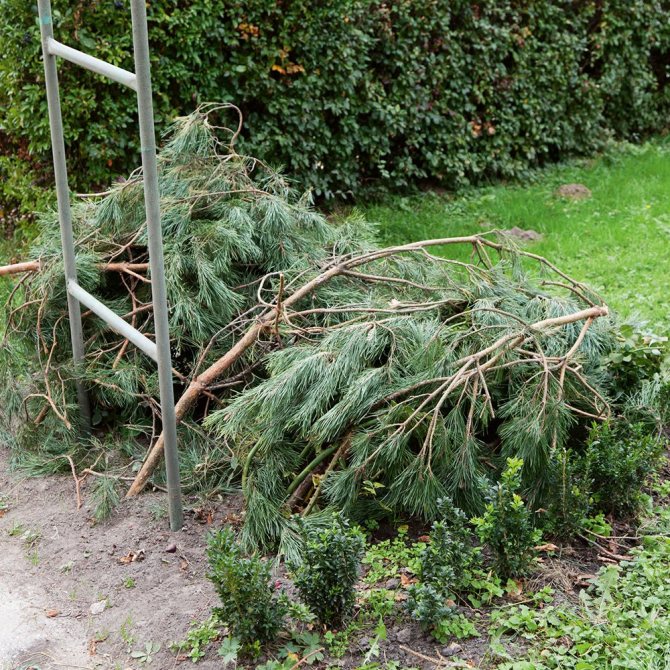

With the arrival of heat, the winter shelter must be removed
Last of all, the mulching layer is removed, which acts as a heater in areas with milder and warmer climatic conditions. From under the bushes you need to scoop out all last year's garbage and remnants of vegetation. Spores of fungal diseases and larvae of various harmful insects hibernate in old mulch and plant residues, therefore all organic waste (last year's leaves, dry branches, mulch residues, etc.) must be destroyed (burned).
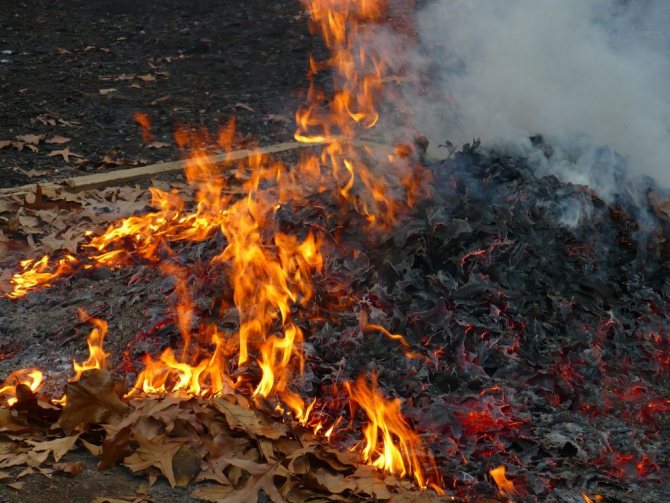

All plant debris must be burned
After removing the winter shelter, it is recommended to monitor the weather so that in the event of severe return frosts, you can cover the gooseberries. Otherwise, the buds can freeze and you can forget about a good harvest.
We never cover the gooseberries on purpose for the winter. Usually, it is enough to simply bend the branches closer to the ground. The fallen snow cover completely covers the bushes and perfectly protects them from frost. But in the spring, you need to quickly raise the shoots so that they do not touch the soil.
How to prepare gooseberries for winter
In the southern region, gooseberries do not require additional shelter. It is enough to mulch and cover with snow. And in the north, the berry grower needs help. At temperatures below 40 degrees, gooseberry shoots will die. How to get sheltered?
- It is necessary to first pour the earth into the root circle, and then mulch with any of the above materials. The layer should be about ten centimeters.
- The shoots must be tied with twine, and then the bush must be pressed to the ground. From above, the gooseberries are covered with burlap, and sprinkled with earth. An additional cover can be a wooden shield, which is covered with snow.
All these activities are carried out only after all autumn work on processing, pruning and watering plants has been completed.
In the spring, it is enough to remove the shelter from the bush, and the shoots will straighten themselves within a few days.
When to plant gooseberries
Bushes are planted at different times of the year, both in autumn and in spring.
Planting in autumn
The most favorable period for planting gooseberry bushes is autumn. This is influenced by some features of the root system: the development and growth of shoots is much better when the air temperature is kept at a low positive level. During the winter, the soil around the bush settles on its own, by the spring it will be compacted without outside help. Having adapted to the new conditions in the autumn, the gooseberries will begin to bloom in the spring, the survival rate of the bush will go well, and by the summer the first berries will appear.
The optimal planting period is from mid September to early October.
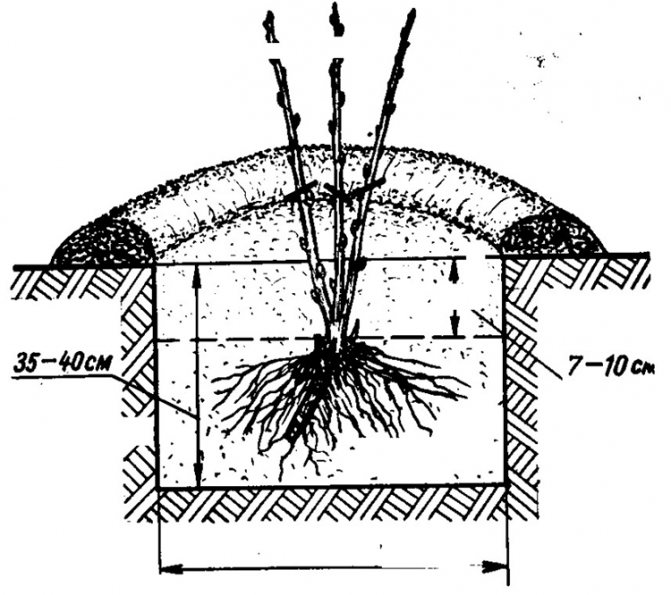

Planting in spring
Gooseberry planting is also carried out in the spring, but this technique is very rarely practiced. It is used only if something prevented it from being carried out in the fall. In spring, the root processes grow slowly, the adaptation of the bush is longer. There is also the possibility that there will be virtually no crop in the year of planting.
As experienced gardeners recommend, planting should be done in early spring. But the earth must definitely thaw completely.

